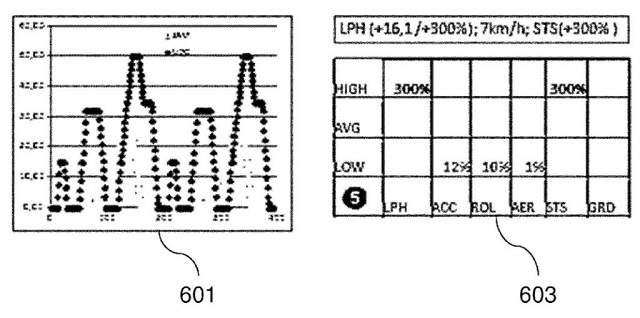This decision concerns a method for the detection of a movement characteristic of a vehicle. The EPO considered this non-technical. Here are the practical takeaways from the decision T 0772/18 (recording a movement characteristic of a vehicle / TELEKOM) of February 26, 2021 of Technical Board of Appeal 3.5.01:
Key takeaways
The information that a fuel consumption deviates from a reference fuel consumption or the cause of such a deviation (for example acceleration, air resistance, etc.) may be considered technical information. However, such information does not credibly support the driver in carrying out a technical task through constant and / or guided human-machine interaction.
On the one hand, the information only displayed to the driver does not contain any specific instructions on how he should control the vehicle, for example to optimize fuel consumption, and on the other hand, the real fuel consumption is not shown either, which is why this information does not contribute to the inventive step.
The invention
The European patent application relates to traffic telematics with the object to provide an efficient concept for detecting causes of fuel consumption of a vehicle.
For this purpose, a speed profile of the vehicle is recorded with the aid of a mobile communication device, for example a smartphone. Based on this, physical formulas are used to calculate the forces acting on the vehicle and associated partial energies, such as acceleration energy or air resistance energy, as well as a corresponding fuel consumption.
As shown in table 603 in Figure 6, these values are compared with corresponding reference values that are calculated from a specified reference speed. The column "LPH" in Figure 6 shows, for example, that the fuel consumption is 300% higher than the typical fuel consumption for the urban reference cycle.

Fig. 6 of EP2913792
Here is how the invention was defined in claim 1:
Claim 1 (main request)
1. Method (100) for detecting a movement characteristic of a vehicle, with:
Detecting (101) a speed profile of the vehicle within a predetermined time interval;
Determining (103) a number of forces acting on the vehicle on the basis of the speed profile of the vehicle and at least one physical vehicle parameter, the number of forces acting on the vehicle comprising an acceleration force of the vehicle, the at least one physical vehicle parameter being a mass of the vehicle wherein the acceleration force is determined as the product of the mass of the vehicle and a time derivative of the speed profile of the vehicle for increasing speeds;
Determining (105) a vehicle energy on the basis of the number of forces acting on the vehicle within the predetermined time interval, the vehicle energy being determined by means of an integration of a product of the forces acting on the vehicle and the speed profile of the vehicle over the predetermined time interval; and
Comparing (107) the vehicle energy of the vehicle with a reference energy in order to detect the movement characteristics of the vehicle within the predetermined time interval, the vehicle energy of the vehicle being assigned a fuel consumption of the vehicle, the reference energy being assigned a reference fuel consumption, the comparing (107) comprises comparing the fuel consumption of the vehicle with the reference fuel consumption to detect a fuel consumption characteristic of the vehicle.
Is it patentable?
Both the examining division and the Board did not question the technical character of the invention as a whole.
However, the Board considers that the distinguishing feature of claim 1 does not solve a technical problem:
2.4 The board agrees with the appellant that D2 does not disclose the calculation of a reference energy and a corresponding fuel consumption characteristic. However, it cannot see a solution to a technical problem in this, in particular not – as the appellant claims – the recognition of economical driving behavior and the optimization of fuel consumption (to be understood in the context of human-machine interaction, see T 336/14, guiding principle ).
2.5 The detection of the fuel consumption characteristic, as carried out in the last step of claim 1 ...calculates an additional consumption or a saving of a fuel consumption compared to a specified reference consumption.
The mere calculation of such a characteristic does not include any feedback to the driver or any other output of this information. For this reason alone, this information cannot play a role in the interaction of the driver with the vehicle...
2.6 The information that a fuel consumption deviates from a reference fuel consumption or the cause of such a deviation (e.g. acceleration, air resistance, etc.) may be considered technical information. However, the board is of the opinion that this information does not credibly support the driver in carrying out a technical task through constant and / or guided human-machine interaction (as in T 336/14, reasons 1.2.4 and 1.2.5, or T 1000/09, reason 7, explained).
On the one hand, the information displayed to the driver does not contain any specific instructions on how to control the vehicle, for example in order to optimize fuel consumption, and on the other hand, as the testing department has already determined, it does not seem to reflect real fuel consumption either. Rather, this also depends on the preferences of the driver, for example on the selection of more efficient or less efficient gears.
At most, feedback may sharpen the driver's understanding that he may be driving too fast or driving too often on roads with steep inclines and in city traffic. However, this alone is not sufficient to solve the technical problem mentioned by the appellant.
Since the distinguishing feature over D2 could not provide any technical contribution, the claimed subject-matter does not involve any inventive step within the meaning of Article 56 EPC. Hence, the appeal was dismissed.
The content of this article is intended to provide a general guide to the subject matter. Specialist advice should be sought about your specific circumstances.


